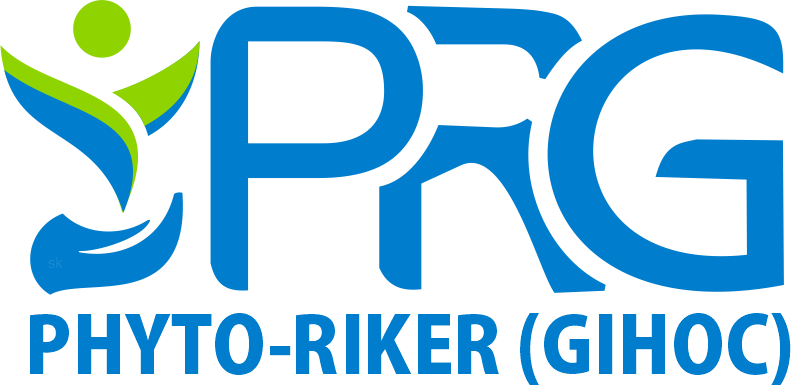- Have any questions?
- info@phyto-rikergh.com
CODEINE FOR MILD TO MODERATE PAIN

INNOVATOR, BRANDED – GENERIC, GENERIC MEDICINES, BIOEQUIVALENCE
June 27, 2022
EWN partners Newmont and Phyto-Riker (GIHOC) with donations to support Pantang Hospital
June 21, 2021… things to note.
In light of the reported widespread abuse of tramadol in the country, codeine use seems to be on the rise. What we need to remember is that it is an opioid and also liable to abuse. It has its place in the management of pain.
The WHO analgesic ladder was a strategy proposed by the World Health Organization [WHO], in 1986, to provide adequate pain relief for cancer patients [Anekar et al. Statpearls.http:// www.ncbi.nlm.nih.gov/books/NBK554435/].
The analgesic ladder was part of a vast health program termed the WHO Cancer Pain and Palliative Care Program aimed at improving strategies for cancer pain management through educational campaigns, the creation of shared strategies, and the development of a global network of support. This analgesic path, developed following the recommendations of an international group of experts, has undergone several modifications over the years and is currently applied for managing cancer pain, and acute and chronic non-cancer painful conditions due to a broader spectrum of diseases such as degenerative disorders, musculosketal disease, neuropathic pain disorders and other types of chronic pain.
The original ladder mainly consisted of three steps:
First step. Mild pain: non-opioid analgesics such as nonsteroidal anti-inflammatory drugs [NSAIDS] or acetaminophen with or without non-opioid analgesics, and with or without adjuvants.
Second Step. Moderate Pain: weak opioids (hydrocodone, codeine, tramadol) with or without non-opioid analgesics, and with or without adjuvants.
Third step. Severe and persistent pain: potent opioids [morphine, methadone, fentanyl, oxycodone, buprenorphine, oxymorphone] with or without non-opioid analgesics, and with or without adjuvants.
The term adjuvant refers to a set of drugs belonging to different classes. Although their administration is typically for indications other than pain treatment, these medications can be of particular help in various painful conditions. Adjuvant, also called co-analgesics, include antidepressants including tricyclic antidepressants [TCAs] such as amitriptyline and nortriptyline, serotonin-norepinephrine re-uptake inhibitors[SNRIs] such as duloxetine and venlafaxine, anticonvulsants like gabapentin and pregabalin, topical anesthetics [ e.g., lidocaine patch], topical therapies [e.g., capsaicin], corticosteroids, bisphosphonates, and cannabinoids.

The key concept of the ladder is that it is essential to have adequate knowledge about pain, to assess it degree in patient through proper evaluation, and to prescribe appropriate medications. As many patients will receive opioids eventually, it is essential to balance the optimum dosage with the side effect of the drug. Opioid rotation can be adopted to improve analgesia and reduce side effects. Patient should receive education about the uses and side effects of drugs to avoid misuse or abuse without compromising their beneficial aspects.
The real limitation of the original scale was the impossibility of integrating non-pharmacological treatment into the therapy path. As a consequence, a fourth step was added to the ladder. It includes numerous non-pharmacological procedures that are robust recommendations for treating persistent pains, even in combination with the use of strong opioids or other medications. This group encompasses interventional and minimally invasive procedures such as epidural analgesia, intrathecal administration of analgesic and local anesthetic drugs with or without pumps, neurosurgical procedures (e.g., lumber percutaneous adhesiolysis, cordotomy), neuromodulation strategies (e.g., brain stimulators, spinal cord stimulation), nerve blocks, ablative procedures (e.g., alcoholization, radiofrequency, microwave, cryoablation ablations; laser induced thermotherapy, irreversible electroporation, electrochemotherapy), cementoplasty and palliation radiotherapy.
The updated WHO analgesic ladder focuses on the quality of life and adopts a bidirectional approach, extending the strategy to treat acute pain as well. For acute pain, the strongest analgesic (for that intensity of pain) is the initial therapy and later toned down, whereas, for chronic pain, employing a step-wise approach from bottom to top. The International Association for the study of Pain (IASP) adopts a therapeutic approach more focused on the type of pain (i.e., mechanism) and on the mechanism of action of the drugs used to treat it. Therefore, in the case of chronic nociceptive pain on an inflammatory basis, it would be more appropriate to use steroids or NSAIDs. On the other hand, low-inflammatory nociceptive pain should receive treatment with opioids and non-opioid analgesics. Neuropathic pain may require antidepressants or anti-convulsant, and specific drugs in certain rheumatologic clinical conditions (e.g, colchicine to treat gout)
Everyone is likely to experience pain at least once in a life, either acute or chronic. Indeed, pain is the most common reason patients see their doctors or access to an Emergency Department (ED) (Franceschi et al. Safety and efficacy of the combination Acetaminophen-codeine in the treatment of pain of different origin. European Review for Medical and Pharmacological Sciences.2013;17:2129-2135).
Pain is a very complex phenomenon that simultaneously involves different spheres, including sensorial, emotional and spiritual. The complexity could explain why so many different molecules may be effective in the treatment of different kinds of pain. The World Health Organization (WHO) promotes and supports optimal pain relief as a fundamental human right, developed an analgesic ladder to guide healthcare providers in pain management.
There are different methods to assess pain treatment: most of the studies published on pain treatment evaluate the efficacy of a specific analgesic by means of the visual analogue scale (VAS). This scale can be used to easily evaluate pain severity and relief, and the effect of different drugs on pain. Acetaminophen/Codeine combination represents the standard medication in the second step of the WHO analgesic ladder and is the most commonly used opioid analgesic for a variety of pain conditions. The combination of two different drugs acting centrally and peripherally, or potentiate both efficacy and tolerability. Codeine is a selective μ opioid receptor agonist that is converted to the more active compound morphine after a hepatic O-demethylation. However, this conversation is not equal in all patients due to generic polymorphism among different ethnic groups and could reflect in varying severity of adverse effects. Adverse effects of opioids include nausea, constipation, abdominal pain, respiratory depression, urinary retention, sedation, pruritus and dependence. Acetaminophen/Codeine combination is recommended for pain not controlled by Acetaminophen alone.
The Acetaminophen/Codeine combination is effective in the treatment of mild to moderate pain in all the setting analyzed by different studies published in general literature.
Codeine (3-methylmorphine) is a mild opioid with analgesic and antitussive effect. Its analgesic activity is mostly due to the conversion to morphine by the cytochrome P450 enzyme CY-P2D6. In the context of analgesic action, Codeine can be considered as a prodrug. Only around 10% of codeine is converted to morphine. It has been found that a combination of different analgesic drugs at fixed doses, rather than their single use, leads to a faster and better acute pain relief. The main purpose of such combination is the synergistic analgesic effect due to the multimodal approach to pain processing, alongside the better safety profile with no increase of the adverse effect incidence due to the initial lower doses of individual analgesics .The combination of non-opioid analgesic/antipyretic drugs, like paracetamol, ibuprofen, or acetylsalicylic acid with codeine is rational since these substances have different mechanisms of action on pain with greater analgesic potential being achieved, without reaching drugs individual toxic limits. It is worth mentioning that doses of codeine in combinations with other drugs vary significantly, from 8 up 60mg.
Culled from the features page: Your Health – Ghana Times Newspaper, 23rd March 2022.
Article by Dr. Edward O. Amporful
Chief Pharmacist, Cocoa Clinic


